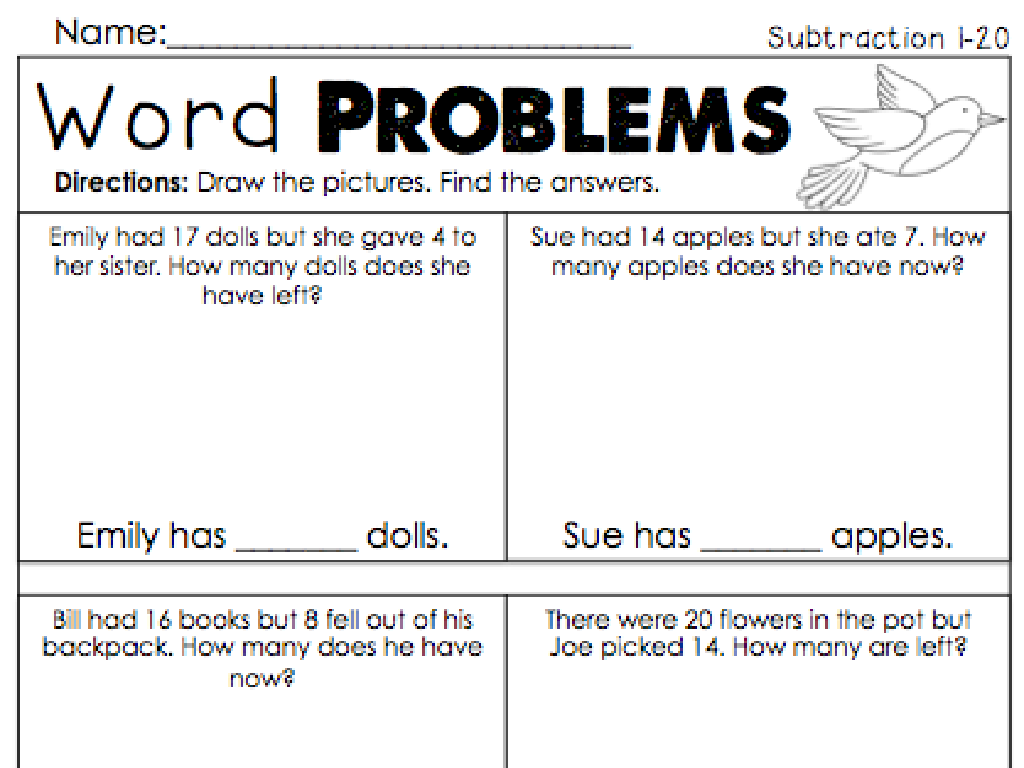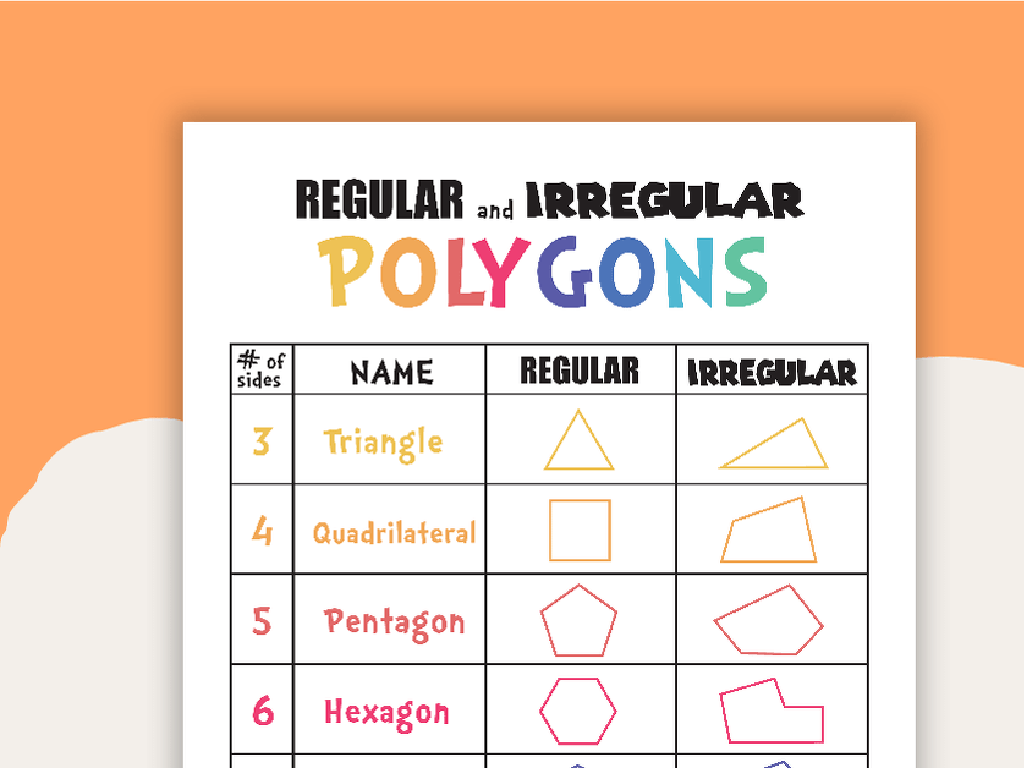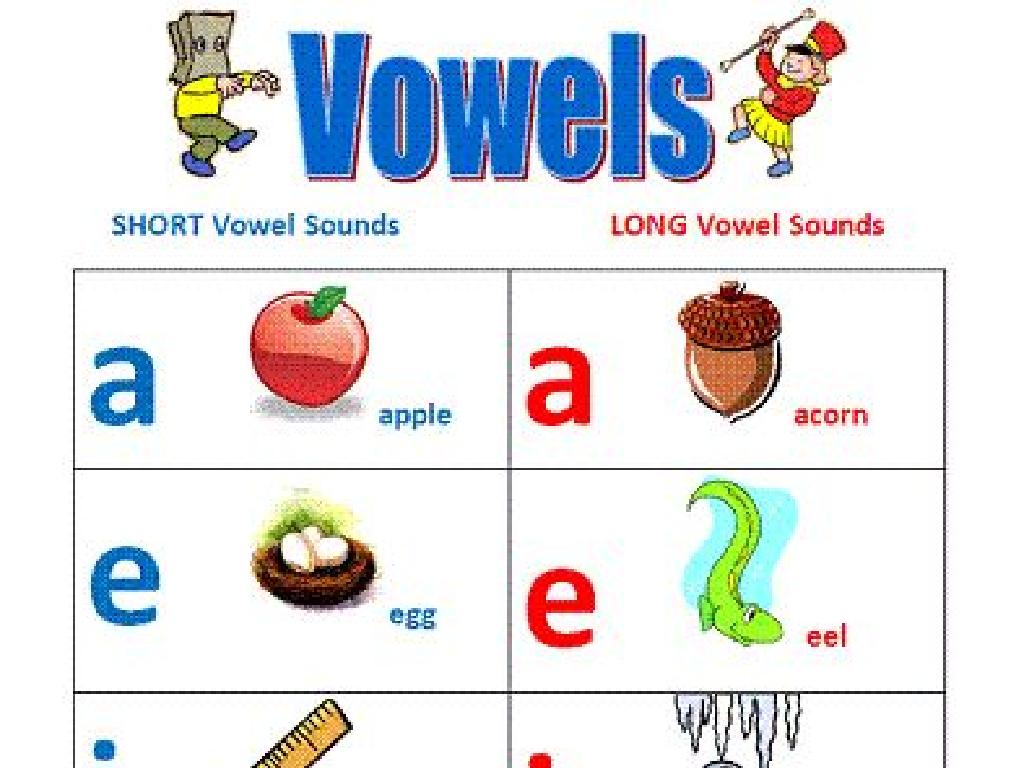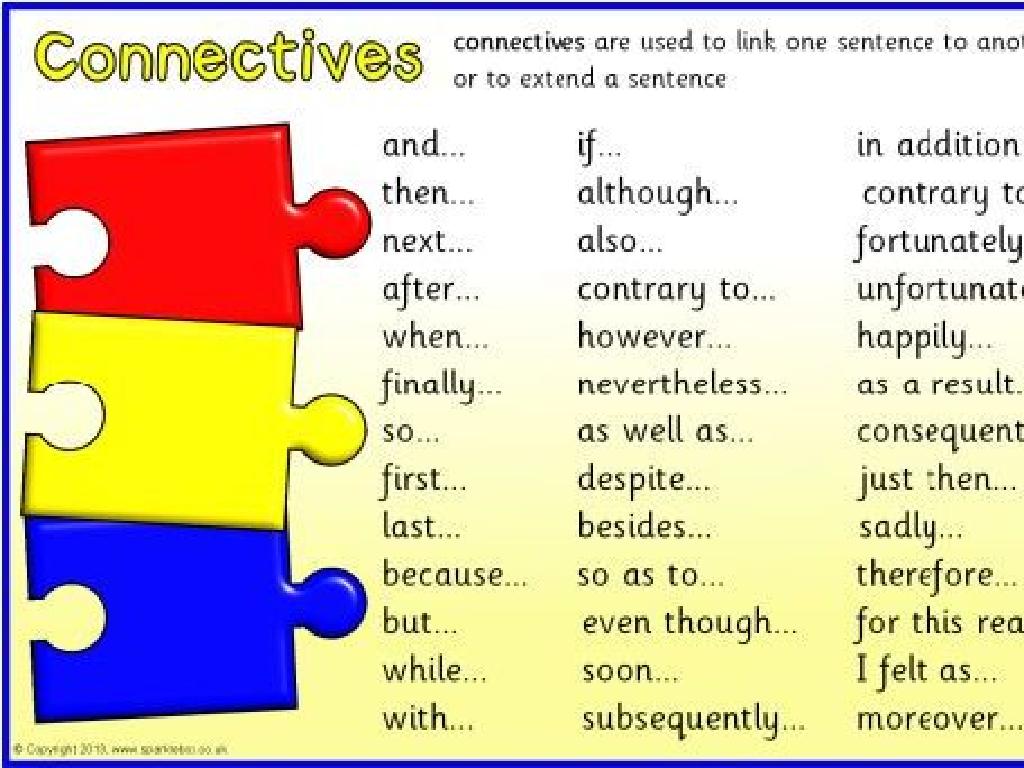Multiplication And Division Facts Up To 10: True Or False?
Subject: Math
Grade: Third grade
Topic: Mixed Operations: Multiplication And Division
Please LOG IN to download the presentation. Access is available to registered users only.
View More Content
Becoming Math Detectives: True or False Facts
– Explore Multiplication & Division
– Learn facts up to 10
– True or False: How to decide
– Use multiplication & division to check if statements are correct
– Practice with math detective work
– Solve problems to find out if they are true or false
|
In today’s class, we will dive into the world of multiplication and division, focusing on facts up to 10. The goal is to help students understand how to verify the accuracy of given statements and determine whether they are true or false. Encourage the children to think like detectives, using their math skills to investigate and solve each ‘case’. Provide examples such as ‘4 x 2 = 8: True or False?’ and ’15 ÷ 3 = 5: True or False?’ to illustrate the concept. As an activity, you can create a worksheet with a mix of true and false statements for the students to solve. This will not only reinforce their understanding of multiplication and division facts but also enhance their critical thinking skills.
Understanding Multiplication
– Multiplication: repeated addition
– It’s like adding the same number many times!
– Example: 3 x 2 as addition
– 3 x 2 means 2 + 2 + 2. That’s 6!
– Multiplication facts up to 10
– Learn the times tables from 1 to 10.
– True or False practice
– We’ll solve problems to test our knowledge.
|
This slide introduces the concept of multiplication as repeated addition, which is a foundational skill in third-grade mathematics. Start by explaining that multiplication is a shortcut for adding the same number multiple times. Use the example provided (3 x 2) to illustrate this point concretely. Encourage students to think of multiplication in terms of groups of objects to visualize the concept better. After explaining, move on to multiplication facts up to 10, which students should memorize as they are the building blocks for more complex math. Conclude the lesson with a true or false activity where students determine the accuracy of various multiplication statements, reinforcing their understanding of multiplication facts.
Understanding Division
– Division: Splitting into equal parts
– Example: 6 ÷ 3
– 6 items divided into 3 groups gives 2 items per group
– Division as sharing equally
– Think of division as sharing items fairly among friends
– True or False: Practice problems
– We’ll solve problems to see if our division facts are true
|
This slide introduces the concept of division to third-grade students by explaining it as the process of splitting a number into equal parts or groups. Use everyday scenarios such as sharing snacks among friends to make the concept relatable. The example provided (6 ÷ 3) illustrates how 6 items can be divided into 3 equal groups, with each group having 2 items. Emphasize that division is another way of sharing things equally. To reinforce learning, engage students with true or false practice problems where they can apply their understanding of division facts up to 10. Encourage students to explain their reasoning for each answer to foster a deeper comprehension of the concept.
True or False: Multiplication Facts
– Understanding multiplication facts
– Example: Is 4 x 3 = 12 true?
– 4 groups of 3 items each make 12, so it’s true
– Methods to verify multiplication
– Use objects, draw pictures, or skip count
– Practice with more examples
– Try 5 x 2 = 10 or 7 x 3 = 21 to check if they’re true
|
This slide is aimed at helping students understand how to verify multiplication facts up to 10. Start by explaining what multiplication facts are: they are basic math problems that we can memorize to help us multiply quickly. Use the example provided (4 x 3 = 12) to show students how to check if a multiplication fact is true by visualizing or grouping objects, drawing arrays, or using skip counting. Encourage students to use these methods to practice with more examples, reinforcing their understanding of multiplication. This activity will help build their confidence in solving multiplication problems and prepare them for more complex math concepts.
True or False: Division Facts
– Investigate division facts
– Example: 9 ÷ 3 = 3
– Is dividing 9 by 3 equal to 3?
– Verify true or false
– Use multiplication to check: 3 x 3
– Steps to check division
– Divide 9 by 3 and compare to 3
|
This slide is aimed at helping students understand how to verify division facts. Start by presenting the concept of division as sharing equally and then introduce the true or false activity. Use the example 9 ÷ 3 = 3 to show students how to check if a division statement is true. Explain that they can verify it by using the inverse operation, multiplication. If 3 times 3 equals 9, then the statement is true. Guide the students through the steps of dividing 9 by 3 and comparing the result to the number on the other side of the equal sign. Encourage them to use this method to check other division facts for accuracy.
Checking Our Facts: True or False?
– Use multiplication to verify facts
– Multiply to check if a statement like 3 x 4 = 12 is true
– Use division to confirm statements
– Divide to see if 20 ÷ 5 = 4 is correct
– Matching answers mean truth
– Practice with class examples
– We’ll solve problems as a class to learn
|
This slide is aimed at helping students understand how to use multiplication and division to check the truthfulness of mathematical statements. Start by explaining that multiplication can confirm if products are correct. For example, to check if 3 x 4 really equals 12, students can multiply 3 by 4. Similarly, use division to verify if division statements are true, such as confirming that 20 divided by 5 equals 4. Emphasize that if their answer matches the statement, then it’s true; if it doesn’t, the statement is false. Engage the class with interactive examples, asking them to solve and verify different statements. This will reinforce their understanding of multiplication and division facts up to 10 and develop their critical thinking skills.
Group Activity: True or False Game
– Receive a set of math facts
– Decide if each fact is true or false
– Discuss your answers as a team
– Use multiplication or division to check each fact
– Explain your reasoning to the class
– Share how you figured out each answer
|
This interactive group activity is designed to encourage collaboration and critical thinking among students as they work together to determine the accuracy of various multiplication and division facts up to 10. Provide each group with a set of mixed operation facts and instruct them to reach a consensus on whether each fact is true or false. Encourage them to use scratch paper to perform the operations if necessary. After the group discussion, each group will present their findings and explain the reasoning behind their decisions. This will not only reinforce their understanding of multiplication and division facts but also enhance their ability to articulate mathematical reasoning. Possible variations of the activity could include using flashcards, timed challenges, or incorporating a point system for correct answers to add a competitive element.
Class Activity: Create Your Own Fact
– Create your own multiplication fact
– Create your own division fact
– Decide if each fact is true or false
– Explain why your facts are true or false
– Use your knowledge of multiplication and division to justify your answer
|
This activity is designed to engage students in creating their own multiplication and division facts, fostering a deeper understanding of the concepts. Encourage students to think creatively and come up with facts that can be easily visualized or related to real-life scenarios. Provide guidance on how to determine the truthfulness of a fact by using arrays, grouping, or repeated addition for multiplication, and by using sharing or partitioning for division. After creating their facts, students will decide if they are true or false and prepare to explain their reasoning to the class. This will not only help them practice their math skills but also develop their critical thinking and presentation skills. Possible activities could include using objects to represent multiplication groups, drawing pictures to illustrate division, or using number lines to show multiplication as repeated addition and division as repeated subtraction.
Conclusion: Becoming Math Fact Masters
– Celebrate learning true or false facts
– Importance of checking your work
– Reviewing answers helps avoid mistakes
– You’re on the way to mastery
– Keep practicing multiplication and division
– Practice with facts up to 10 regularly
|
As we wrap up today’s lesson on multiplication and division facts up to 10, it’s important to acknowledge the hard work the students have put into learning how to determine if statements are true or false. Emphasize the importance of double-checking their work to ensure accuracy. Congratulate them on the progress they’ve made towards becoming math fact masters. Encourage them to continue practicing these skills, as repetition is key to mastery. You can suggest fun ways to practice, like math games or flashcards, and remind them that these foundational skills will be incredibly useful in more advanced math concepts.






